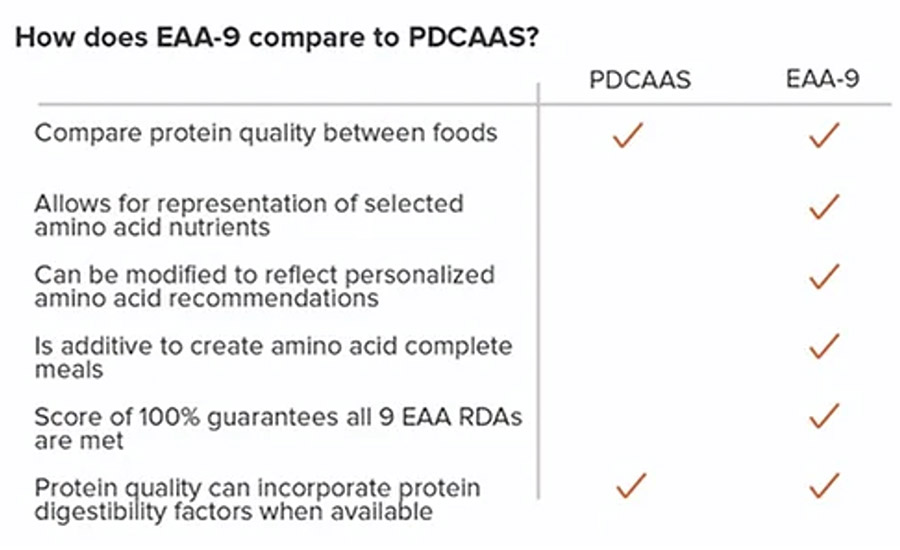
With excitement building for the 2024 Olympics in Paris, global athletes are ramping up their workouts and optimizing their nutrition for the July 26-Aug. 11 competition. Casual athletes, like my 17-year-old grandson and myself, also try to optimize our workouts and nutrition, including our protein intake.
A 2023 international symposium, “Dietary Protein for Human Health,” provided insights on protein requirements for athletes, updates on methods to assess protein quality, and highlighted differences between protein requirements for various athletes. A new scoring model, EAA-9, helps individuals more precisely calculate the adequacy of their protein intake per meal and per day.
Protein quality
In recent years, there has been a lot of emphasis on plant-based diets, and plant protein supplements abound in the marketplace. Many plant proteins claim to be “complete proteins” because they contain all of the essential amino acids (EAAs). However, to qualify as a complete protein, the essential amino acids must be present in adequate quantities.
“Reliance on low-quality dietary proteins generally requires greater energy intake to reach EAA goals,” says Robert Wolfe, Ph.D., chair in nutritional longevity, University of Arkansas Medical Sciences, at the protein symposium. “The extent of stimulation of protein synthesis by a dietary protein is directly related to the amount of EAAs per grams of protein,” he added.
“Protein intake is a somewhat outdated guideline or surrogate representing a true need for nine EAAs,” notes Don Layman, Ph.D., professor of food science and human nutrition at the University of Illinois at Urbana-Champaign. Current dietary guidelines often reflect minimal, rather than optimal protein intake for athletes. Working with the Nutrient Institute, Layman developed a new scoring method, EAA-9, which evaluates the EAA density per serving of food in relation to daily recommendations.
Athlete needs and sources
Katie Ledecky, a 160-pound Olympic swimmer and winner of seven Olympic Gold Medals, typically drinks two glasses of chocolate milk per day, and often has yogurt and berries as an afternoon or bedtime snack. Swimming is a sport that requires many hours in the pool. At the protein symposium, Daniel Moore, associate professor of kinesiology and physical education at the University of Toronto, revealed that endurance exercise increases daily protein requirements.
My grandson, Drake, is 17, weighs 190 pounds, and works out in the gym two hours per day to stay fit for a variety of high school sports including tennis and golf. In addition to whole foods protein sources, Drake often grabs a convenient dairy protein shake.
Seniors require additional protein due to greater anabolic resistance. As a senior weighing 110 pounds, I focus on moderate exercise like yoga and hiking, and consuming adequate protein at breakfast. One of my go-to breakfast options is a bowl of whey protein oatmeal, prepared with ultrafiltered milk, and topped with nuts.
“All three of these ‘athletes’ should target 1.2 to 1.8 g/kg body weight for their protein. These protein targets assume that the protein is a mixture of high-quality animal protein and lower quality plant protein. As high-performance athletes, Katie and Drake presumably have relatively high energy needs and a relatively high volume of food consumption,” Layman states. With daily protein intake above 120 g, Katie and Drake have great flexibility in their protein choices that will still meet EAA needs, he adds. According to Layman, application of the EAA-9 score for them would be most useful for the breakfast meal to assure that they meet their needs for 3.0 g of the amino acid leucine to trigger muscle development. Yet, for older adults with lower exercise intensity and minimal resistance exercise, the challenge is to meet EAA with less total food, less total protein and fewer calories, he says. “The EAA-9 Score becomes increasingly more important the closer you get to minimum requirements. Sharon’s minimum protein target should be approximately 75 g/day,” Layman maintains.
For athletes struggling to incorporate adequate protein into their diet, foods and supplements containing whey and milk protein help to meet EAA requirements. “Glanbia’s wide array of whey protein and amino acid products provide athletes with optimal nutrition. Notably, whey protein stands out as a high-quality protein source, recognized for its completeness by containing all nine EAAs. Its quick absorption makes it effective for muscle protein synthesis and post workout recovery,” says Rhitika Poudel, associate research manager at Chicago-based Glanbia Nutritionals.
More resources are coming to assist weekend warriors and hardcore athletes, Layman says. “At this time, there is not an app for the EAA-9 calculation, but hopefully we will have that before the end of 2024,” he concludes.
For more details visit …
Live Stream - International Symposium: Dietary Protein for Human Health (cvent.com)
Chart below is from this website… and I have created a chart version in case you want to use it.
https://www.nutrientinstitute.org/publications/nutrient-based-framework-for-protein-quality




